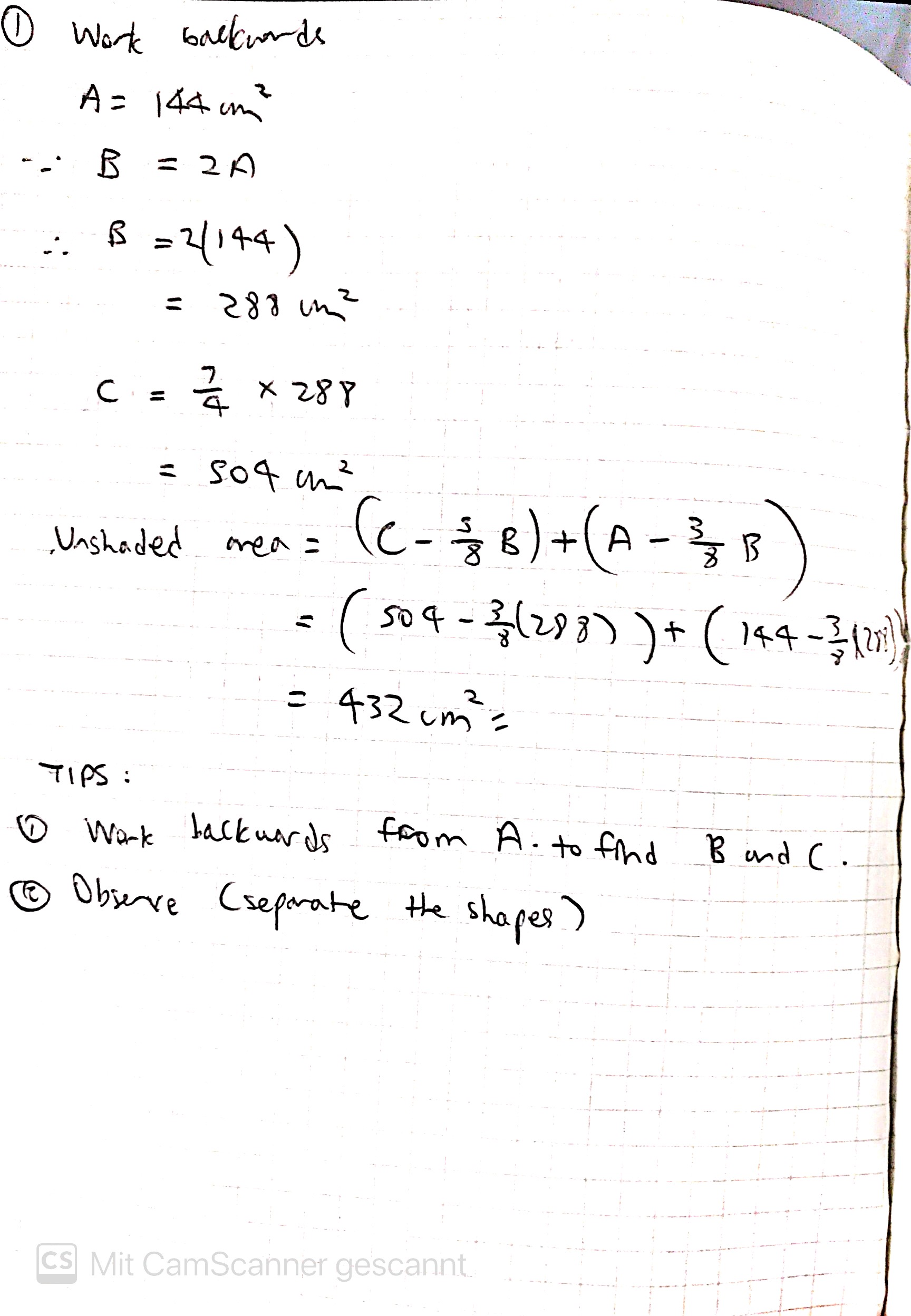Eric's answer to Tan Kai Qi's Primary 6 Maths Fractions Singapore question.
done
1 Upvotes
clear 0 Downvotes
If it’s not clear enough :
Step (1) work backwards:
Since it is given that A= 144cm^2,
And B is twice of A ,
B= 2 x 144 = 288 cm^2
Since B is 4/7 of C,
C = 7/4 x 288
= 504cm^2
By observation, one part of the unshaded area is in C, in which it is equivalent to the area of C- the shaded area. Moreover, the other part is in A, in which it is equivalent to the area of A - the shaded area. A good tip is to regard the A and C as two separate entities.
It is given that the shaded area is 3/8 of B so just calculate accordingly to find the total unshaded area.
Step (1) work backwards:
Since it is given that A= 144cm^2,
And B is twice of A ,
B= 2 x 144 = 288 cm^2
Since B is 4/7 of C,
C = 7/4 x 288
= 504cm^2
By observation, one part of the unshaded area is in C, in which it is equivalent to the area of C- the shaded area. Moreover, the other part is in A, in which it is equivalent to the area of A - the shaded area. A good tip is to regard the A and C as two separate entities.
It is given that the shaded area is 3/8 of B so just calculate accordingly to find the total unshaded area.
Date Posted:
4 years ago


